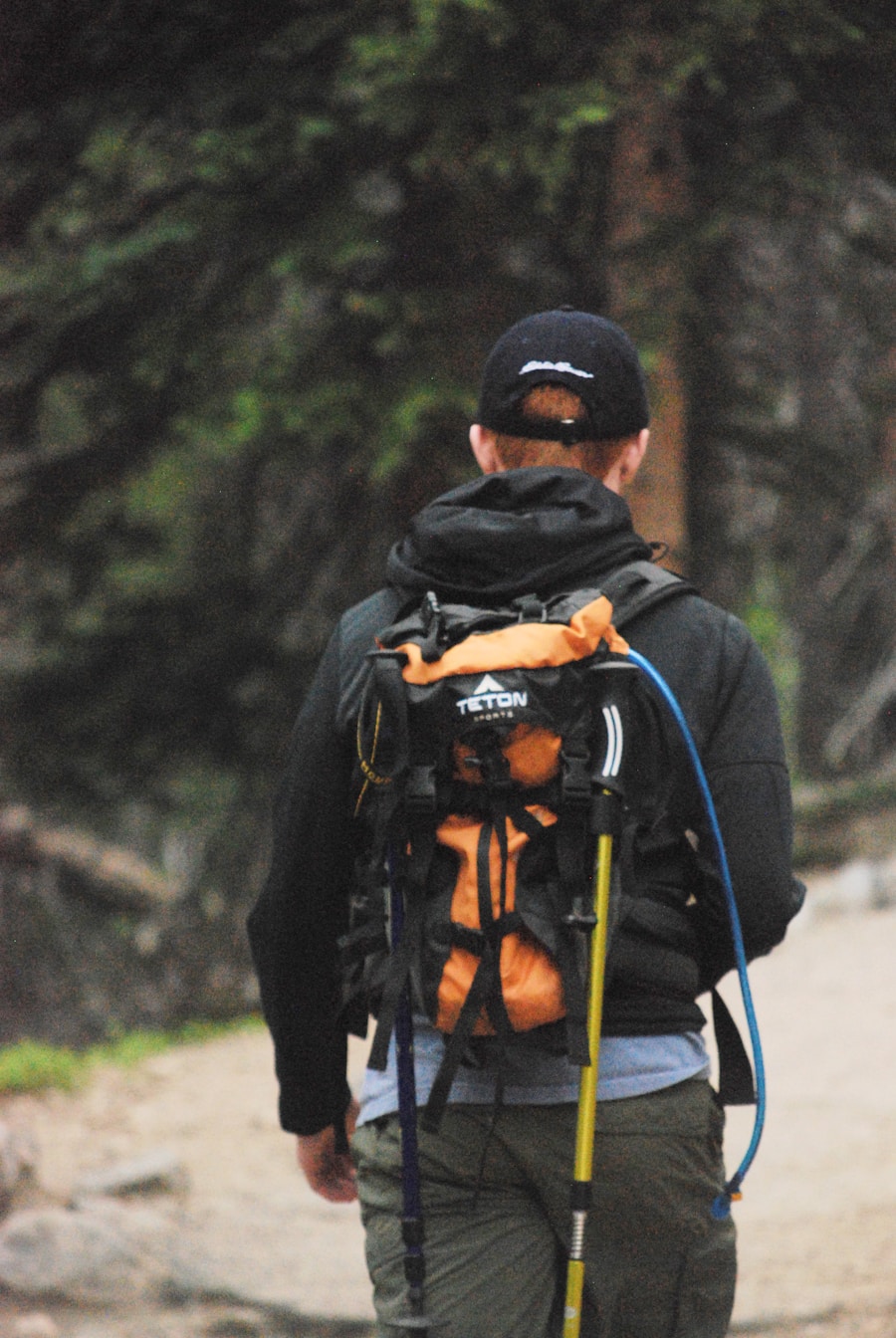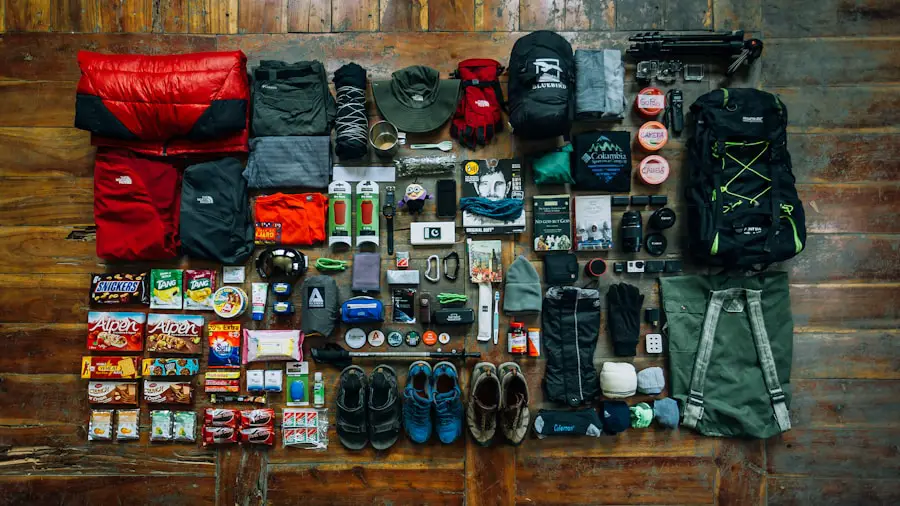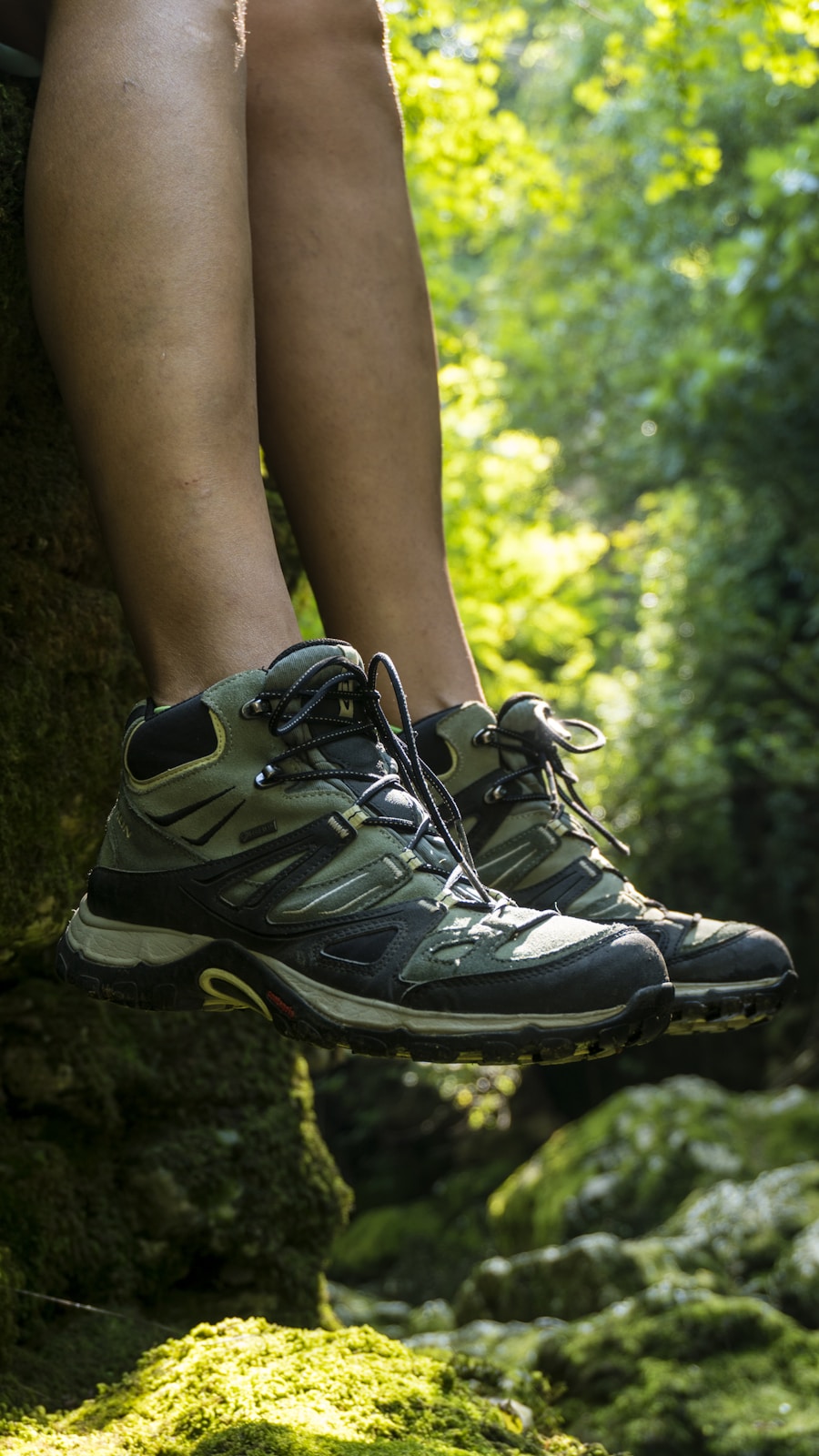Footwear is one of the most critical components of any outdoor adventure, whether it be hiking, trekking, or mountaineering. The right pair of shoes or boots can make the difference between a comfortable journey and a painful ordeal. When selecting footwear, it is essential to consider the terrain you will be traversing.
For instance, rugged trails with loose rocks and uneven surfaces demand sturdy hiking boots with excellent ankle support and a robust tread pattern. Brands like Merrell and Salomon offer models specifically designed for such conditions, featuring durable materials that withstand abrasions and provide traction on slippery surfaces. In contrast, if your adventure involves well-maintained paths or urban exploration, lightweight trail runners may suffice.
These shoes are designed for speed and agility, often incorporating breathable mesh uppers to keep your feet cool. However, it is crucial to ensure that they still provide adequate support and cushioning, especially if you plan to cover long distances. Additionally, the fit of the footwear cannot be overstated; a proper fit minimizes the risk of blisters and discomfort.
It is advisable to try on shoes with the socks you intend to wear during your activities and to walk around in them to assess comfort levels before making a purchase.
Key Takeaways
- Choose footwear with good ankle support and traction for hiking on uneven terrain.
- Look for backpacks with adjustable straps and multiple compartments for organization.
- Carry navigation tools such as a map, compass, and GPS device for accurate direction.
- Dress in layers with moisture-wicking clothing for comfort and protection from the elements.
- Invest in a lightweight and weatherproof shelter such as a tent or tarp for overnight stays.
- Stay hydrated by carrying a water bottle or hydration pack and purifying water from natural sources.
- Pack high-energy snacks and meals to fuel your body during outdoor activities.
- Always carry safety gear such as a first aid kit, whistle, and emergency blanket for unexpected situations.
Backpacks
A well-designed backpack is indispensable for carrying your gear efficiently and comfortably during outdoor excursions. The choice of backpack largely depends on the duration of your trip and the amount of equipment you need to carry. Daypacks, typically ranging from 15 to 30 liters in capacity, are ideal for short hikes or day trips.
They often feature compartments for hydration reservoirs, snacks, and essential gear, allowing for easy access while on the move. Brands like Osprey and Deuter have established themselves as leaders in this space, offering ergonomic designs that distribute weight evenly across the shoulders and hips. For longer treks or multi-day camping trips, larger backpacks with capacities of 50 liters or more are necessary.
These packs often come equipped with additional features such as external attachment points for sleeping bags or trekking poles, as well as multiple pockets for organization. When selecting a larger pack, it is vital to consider the frame type—internal frames provide better stability and load distribution, while external frames offer more ventilation and easier access to gear. Regardless of size, a good backpack should have adjustable straps and a padded hip belt to enhance comfort during extended wear.
Navigation tools

In the wilderness, reliable navigation tools are essential for ensuring you stay on course and reach your destination safely. Traditional maps and compasses remain invaluable resources, especially in areas where GPS signals may be weak or nonexistent. A topographic map provides detailed information about the terrain, including elevation changes, water sources, and trails.
Learning how to read these maps effectively can significantly enhance your outdoor skills. Compasses complement maps by allowing you to orient yourself and determine your heading accurately. In addition to traditional navigation methods, modern technology has introduced various digital tools that can aid in navigation.
GPS devices and smartphone applications like Gaia GPS or AllTrails offer real-time tracking and route planning capabilities. These tools can be particularly useful for identifying trails and points of interest along your route. However, reliance solely on electronic devices can be risky; batteries can die, and signals can be lost in remote areas.
Therefore, it is prudent to carry both traditional navigation tools and modern technology to ensure redundancy in your navigation strategy.
Clothing
| Category | Revenue (in billion USD) | Market Share (%) |
|---|---|---|
| Apparel | 1,842 | 32.4 |
| Footwear | 365 | 6.4 |
| Accessories | 280 | 4.9 |
The clothing you choose for outdoor activities plays a pivotal role in your overall comfort and safety. Layering is a fundamental principle in outdoor clothing, allowing you to adapt to changing weather conditions effectively. The base layer should consist of moisture-wicking materials that keep sweat away from your skin, helping to regulate body temperature.
Fabrics like merino wool or synthetic blends are popular choices for base layers due to their breathability and quick-drying properties. The middle layer serves as insulation, trapping heat while still allowing moisture to escape. Fleece jackets or down vests are excellent options for this layer, providing warmth without excessive bulk.
Finally, the outer layer should be weather-resistant, protecting you from wind, rain, or snow. Waterproof jackets with breathable membranes like Gore-Tex are ideal for keeping you dry while allowing sweat to evaporate. Additionally, consider the importance of accessories such as hats, gloves, and neck gaiters; these items can significantly enhance comfort in cold or windy conditions.
Shelter
When venturing into the great outdoors, having a reliable shelter is paramount for protection against the elements. Tents are the most common form of shelter for campers and backpackers alike. When selecting a tent, consider factors such as capacity, weight, and weather resistance.
Lightweight backpacking tents are designed for portability without sacrificing durability; brands like Big Agnes and REI offer models that balance these needs effectively. In addition to traditional tents, alternative shelter options such as hammocks or tarps have gained popularity among minimalist campers. Hammocks provide a unique sleeping experience while allowing you to set up camp in areas where traditional tent stakes may not be feasible.
Tarps offer versatility; they can be used as a standalone shelter or in conjunction with a hammock for added protection from rain or wind. Regardless of the type of shelter chosen, ensure that it is adequately equipped with stakes and guylines for stability in adverse weather conditions.
Hydration

Staying hydrated is crucial during any outdoor activity, as dehydration can lead to fatigue, decreased performance, and even serious health issues. Carrying an adequate supply of water is essential; this can be achieved through various means such as water bottles or hydration reservoirs integrated into backpacks. Many outdoor enthusiasts prefer hydration bladders due to their convenience; they allow for hands-free drinking through a tube while on the move.
In areas where water sources are available, water purification methods become vital for ensuring safe drinking water. Portable water filters or purification tablets can effectively eliminate harmful pathogens from natural water sources. Brands like Sawyer and Katadyn offer compact filtration systems that are easy to use and transport.
It is advisable to familiarize yourself with local water sources before embarking on your journey; knowing where you can refill your supply can significantly reduce the weight of your pack.
Nutrition
Proper nutrition is fundamental for maintaining energy levels during outdoor activities. The type of food you pack should be lightweight yet calorie-dense to sustain you throughout your journey. Dehydrated meals have become increasingly popular among backpackers due to their convenience; brands like Mountain House offer a variety of options that only require hot water for preparation.
These meals provide essential nutrients while minimizing pack weight. Snacks also play a crucial role in keeping energy levels up during long hikes or climbs. High-energy foods such as trail mix, energy bars, or jerky are excellent choices due to their portability and ease of consumption on the go.
It’s important to consider dietary restrictions when planning meals; many brands now offer gluten-free or vegan options to accommodate various preferences. Additionally, planning meals ahead of time can help ensure that you have a balanced diet that includes carbohydrates for energy, protein for muscle repair, and fats for sustained energy release.
Safety gear
Safety gear is an essential aspect of outdoor adventures that should never be overlooked. Depending on the nature of your activity, various items may be necessary to ensure your safety in case of emergencies or unexpected situations. A first aid kit is a fundamental component; it should include items such as bandages, antiseptic wipes, pain relievers, and any personal medications you may require.
Familiarizing yourself with basic first aid techniques can also prove invaluable in case of injuries. In addition to first aid supplies, other safety gear may include items like headlamps or flashlights for visibility during low-light conditions, multi-tools for various tasks, and emergency whistles for signaling help if needed. A personal locator beacon (PLB) or satellite messenger can provide an added layer of security by allowing you to communicate your location in remote areas where cell service is unavailable.
Investing in quality safety gear tailored to your specific activities not only enhances your preparedness but also contributes significantly to your overall peace of mind while exploring the great outdoors.
If you’re planning a hiking trip, you’ll want to make sure you have all the necessary gear. One essential item to consider is a reliable pair of hiking boots. Check out this article on the best travel fishing rods for some recommendations on compact and portable options that are perfect for hiking trips. Having the right gear can make all the difference in ensuring a comfortable and enjoyable outdoor adventure.
Love travel? Join Our Facebook Community For More Tips.
FAQs
What are the essential items for hiking?
Essential items for hiking include proper footwear, a backpack, water and hydration supplies, navigation tools, first aid kit, extra clothing layers, and food and snacks.
What type of footwear is best for hiking?
The best footwear for hiking is a pair of sturdy, comfortable hiking boots or shoes with good traction and ankle support.
What should I pack in my hiking backpack?
Your hiking backpack should include essentials such as water, snacks, a map and compass or GPS device, a first aid kit, extra clothing layers, a headlamp or flashlight, and a multi-tool or knife.
How much water should I bring for a hike?
It’s recommended to bring at least 2 liters of water per person for a day hike, and more for longer or more strenuous hikes.
What should I wear for hiking?
Wear moisture-wicking clothing, layers for temperature changes, and sturdy, comfortable hiking boots or shoes. Don’t forget a hat and sunglasses for sun protection.
Do I need a first aid kit for hiking?
Yes, it’s important to carry a basic first aid kit with items such as bandages, antiseptic wipes, pain relievers, and blister treatment for hiking.
What kind of food should I bring for a hike?
Bring lightweight, high-energy snacks such as trail mix, energy bars, and dried fruits. For longer hikes, pack a lunch with sandwiches, wraps, or other easy-to-carry options.
What navigation tools should I bring for hiking?
Bring a map and compass, and consider a GPS device or smartphone with a reliable hiking app. It’s important to have multiple ways to navigate on the trail.
